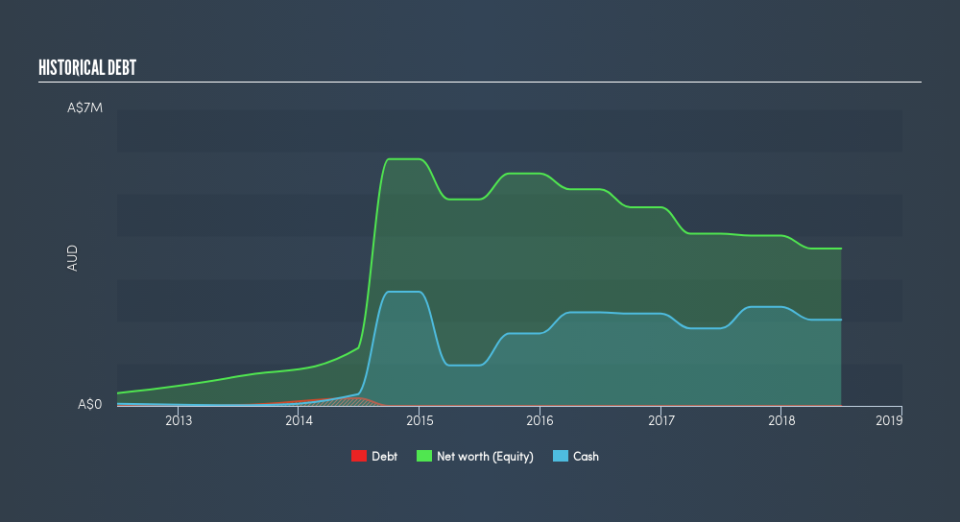Are XTD Limited’s (ASX:XTD) Interest Costs Too High?

Want to participate in a short research study? Help shape the future of investing tools and receive a $20 prize!
Zero-debt allows substantial financial flexibility, especially for small-cap companies like XTD Limited (ASX:XTD), as the company does not have to adhere to strict debt covenants. However, it also faces higher cost of capital given interest cost is generally lower than equity. While zero-debt makes the due diligence for potential investors less nerve-racking, it poses a new question: how should they assess the financial strength of such companies? I will go over a basic overview of the stock’s financial health, which I believe provides a ballpark estimate of their financial health status.
Check out our latest analysis for XTD
Does XTD’s growth rate justify its decision for financial flexibility over lower cost of capital?
Debt funding can be cheaper than issuing new equity due to lower interest cost on debt. Though, the trade-offs are that lenders require stricter capital management requirements, in addition to having a higher claim on company assets relative to shareholders. XTD’s absence of debt on its balance sheet may be due to lack of access to cheaper capital, or it may simply believe low cost is not worth sacrificing financial flexibility. However, choosing flexibility over capital returns is logical only if it’s a high-growth company. A single-digit revenue growth of 2.6% for XTD is considerably low for a small-cap company. While its low growth hardly justifies opting for zero-debt, the company may have high growth projects in the pipeline to justify the trade-off.
Does XTD’s liquid assets cover its short-term commitments?
Given zero long-term debt on its balance sheet, XTD has no solvency issues, which is used to describe the company’s ability to meet its long-term obligations. However, another measure of financial health is its short-term obligations, which is known as liquidity. These include payments to suppliers, employees and other stakeholders. Looking at XTD’s AU$372k in current liabilities, it appears that the company has been able to meet these commitments with a current assets level of AU$2.3m, leading to a 6.3x current account ratio. However, a ratio greater than 3x may be considered by some to be quite high, however this is not necessarily a negative for the company.
Next Steps:
As a high-growth company, it may be beneficial for XTD to have some financial flexibility, hence zero-debt. This may mean this is an optimal capital structure for the business, given that it is also meeting its short-term commitment. Going forward, its financial position may change. This is only a rough assessment of financial health, and I’m sure XTD has company-specific issues impacting its capital structure decisions. I recommend you continue to research XTD to get a more holistic view of the stock by looking at:
Historical Performance: What has XTD’s returns been like over the past? Go into more detail in the past track record analysis and take a look at the free visual representations of our analysis for more clarity.
Other High-Performing Stocks: Are there other stocks that provide better prospects with proven track records? Explore our free list of these great stocks here.
We aim to bring you long-term focused research analysis driven by fundamental data. Note that our analysis may not factor in the latest price-sensitive company announcements or qualitative material.
If you spot an error that warrants correction, please contact the editor at editorial-team@simplywallst.com. This article by Simply Wall St is general in nature. It does not constitute a recommendation to buy or sell any stock, and does not take account of your objectives, or your financial situation. Simply Wall St has no position in the stocks mentioned. Thank you for reading.

